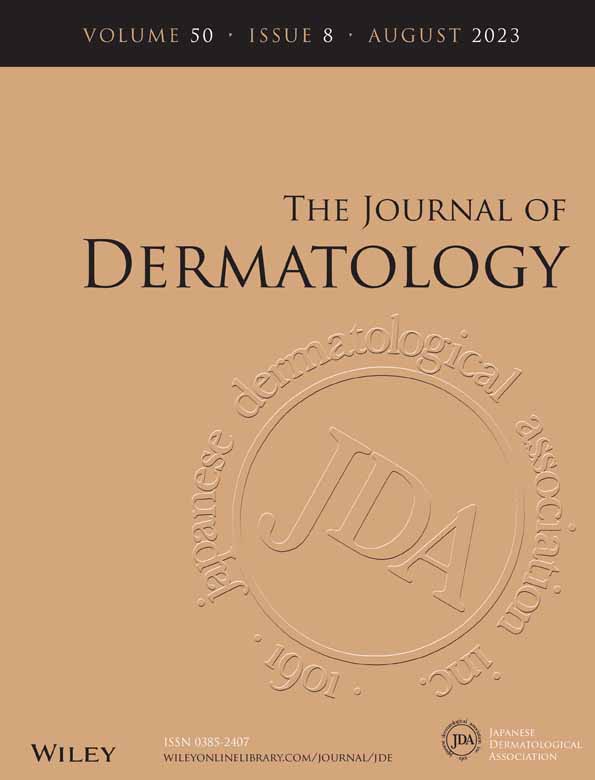Barrier function and ultrastructure characteristics of epidermis in patients with primary cutaneous amyloidosis
Yuling Zhang and Ya Le equally contributed to the article.
Abstract
Previous studies on primary cutaneous amyloidosis (PCA) have mainly focused on exploring genetic mutation and components of amyloid in patients with PCA. However, studies on skin barrier function in PCA patients are scarce. Here, we detected the skin barrier function in PCA patients and healthy people by using noninvasive techniques and characterized ultrastructural features of PCA lesions compared with healthy people using transmission electron microscopy (TEM). The expression of proteins related to skin barrier function was examined by immunohistochemistry staining. A total of 191 patients with clinically diagnosed PCA and 168 healthy individuals were enrolled in the study. Our analysis revealed that all investigated lesion areas displayed higher transepidermal water loss and pH values, and lower Sebum levels and stratum corneum hydration levels in PCA patients compared with the same site area in healthy individuals. The TEM results showed that the intercellular spaces between the basal cells were enlarged and the number of hemidesmosomes decreased in PCA lesions. Immunohistochemical staining showed that the expression of integrin α6 and E-cadherin in PCA patients was less than that in healthy controls, while no differences in the expression of loricrin and filaggrin were observed. Our study revealed that individuals with PCA displayed skin barrier dysfunction, which may be related to alterations in epidermal ultrastructure and a decrease in the skin barrier-related protein E-cadherin. However, the molecular mechanisms underlying skin barrier dysfunction in PCA remain to be elucidated.
CONFLICT OF INTEREST STATEMENT
None declared.




